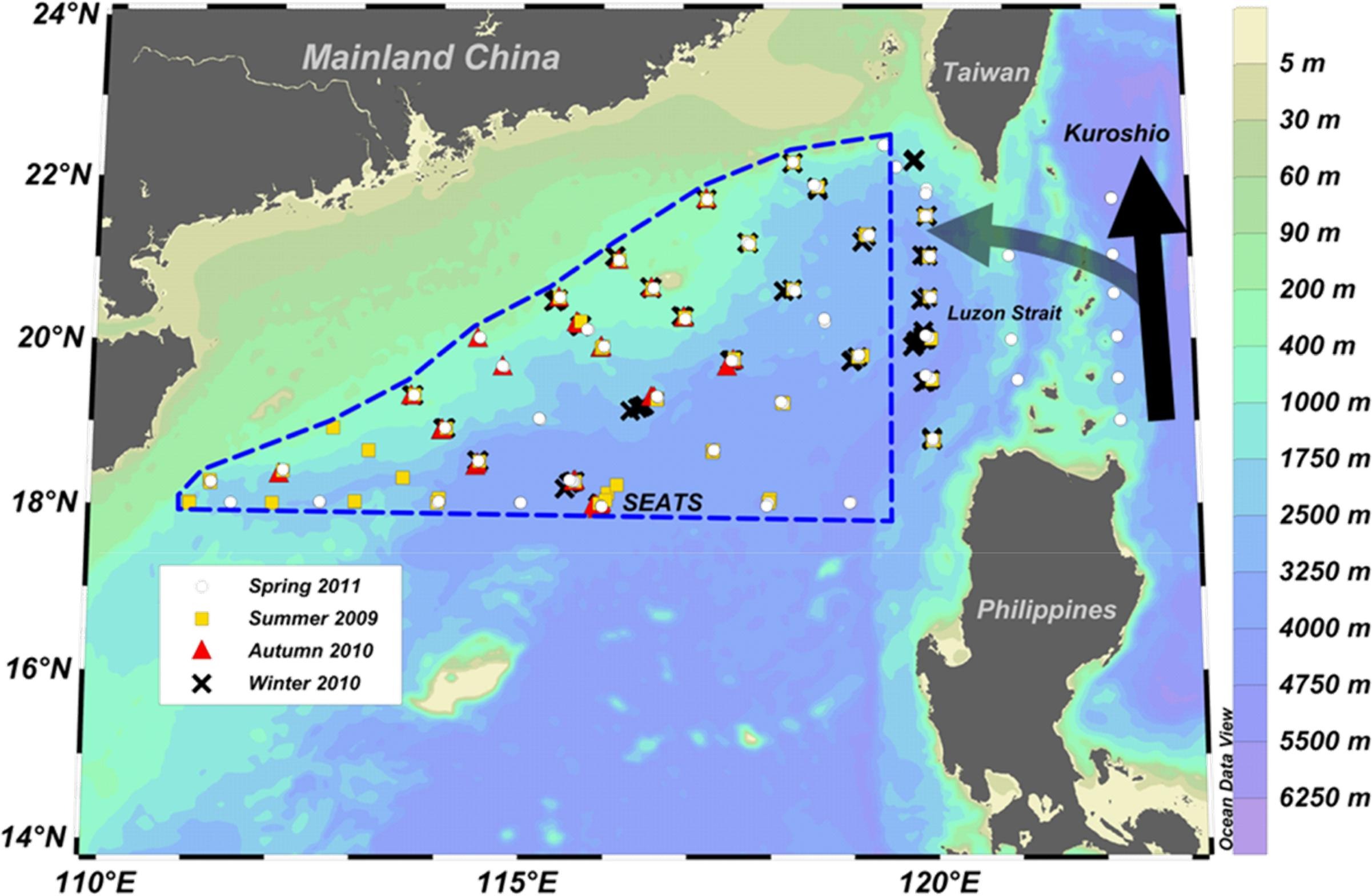The carbonate system of the northern South China Sea: Seasonality and exchange with the western North Pacific
Elliott G. Roberts, Minhan Dai, Zhimian Cao, Weidong Zhai, Liguo Guo, Samuel S.P. Shen, Chuanjun Du
Published in Progress in Oceanography, FEB 2021
Using a most comprehensive, high quality, high-resolution dataset for any marginal sea up to depths >2000 db, we examined the seasonality of the carbonate system in the northern South China Sea (nSCS) and exchange with the West Philippine Sea (WPS) during 2009–2011. The carbonate system dynamics demonstrated evident spatial and seasonal variations. Winter exhibited the highest average surface dissolved inorganic carbon (DIC) concentrations (1936 ± 15 μmol kg−1), and summer had the lowest (1882 ± 12 μmol kg−1), primarily associated with more abundant freshwater inputs in summer. At 100 db depth, decreased DIC and total alkalinity (TA) values were observed within the Luzon Strait vicinity due to the influence of WPS waters. Higher DIC and TA concentrations were found within the central nSCS basin. The average Kuroshio contribution to the DIC inventory in the upper 150 db was seasonally significant, ranging between 11 and 32%, with the highest contributions during spring and winter. Below 2000 db, nSCS basin-averaged DIC was significantly higher than WPS-averaged DIC (∼23 µmol kg−1 difference) due to more organic matter decomposition in the nSCS basin. Within the basin, average deep water DIC values were highest in autumn, and averaged concentrations at >18.5°N were lower than at ≤18.5°N. Our datasets and analysis imply that (i) the significant seasonal and spatial patterns of carbonate chemistry in the nSCS are controlled by a combination of large-scale and smaller mesoscale physical processes; (ii) extrinsically from Asian monsoons via seasonal freshwater discharge and dynamic exchanges with open ocean waters; and (iii) intrinsically, through seasonal vertical mixing as well as mesoscale processes and their subsequent new productions. The seasonal and spatial variability in carbonate parameters established here serves as an essential baseline to monitor future changes to the nSCS and to compare with other marginal sea systems.

Fig. 1. Map of the northern South China Sea (nSCS) basin. The blue dashed area indicates the nSCS study area, defined here as longitude <119.5°E and bottom >200 m, that was sampled during spring (white dots; 6th May – 22nd May 2011, 52 Stations), summer (yellow squares; 22nd July – 12th August 2009, 38 Stations), autumn (red triangles; 26th October – 23rd November 2010, 17 Stations) and winter (black crosses; 11th January – 22nd January 2010, 26 Stations).
Elliott G. Roberts, Minhan Dai, Zhimian Cao, Weidong Zhai, Liguo Guo, Samuel S.P. Shen, Chuanjun Du. 2021. The carbonate system of the northern South China Sea: Seasonality and exchange with the western North Pacific, Progress in Oceanography, 191, 102464, https://doi.org/10.1016/j.pocean.2020.102464.